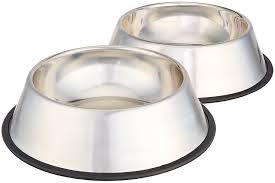With a little work and a few simple cleaning supplies you can remove the unsightly algae from your fish tank. Here are some of the supplies you will need:
Algae scraper/pad, Razor blade, Regular Household Bleach, Filter media, Water siphon, Lime remover or aquarium glass cleaner, Clean rags or towel, Paper towels
Start by cleaning the inside glass, then decorations, gravel, the exterior of the glass and cover and finally the filter.
Begin by giving the glass a thorough cleaning on the inside with an algae pad. There are a wide variety of algae scrapers on the market, from long handled scrubbers to magnetic scrubbers. Although they appear the same, houseware cleaning pads can have soap and chemical residue imbedded in the fibers. This reside can be lethal to your fish, so only use pads specifically intended for aquariums.
For stubborn residue on the glass, use a razor blade held at a very narrow angle to scrape it off. If your aquarium is acrylic, use a plastic razor blade, as steel razors will scratch acrylic even if you are very careful.
Once the inside glass is cleaned, remove rocks, artificial plants, or decorations that have significant algae growth, or are noticeably dirty. Do not clean them with soap or detergents as it is impossible to completely remove soap residue, and as mentioned even a trace can be lethal to fish. Typically a good scrub with an algae scraper will remove the algae and dirt from rocks and plants. For particularly stubborn cleaning problems, mix a 10% bleach solution and soak the items for 15 to 20 minutes. Scrub any remaining residue off, rinse thoroughly in running water, and allow to air dry, in the sun if possible.
Live plants can bleached, however stem plants are not tolerant of bleaching. To bleach live plants prepare a 5% bleach solution, soak the plants for two minutes, then rinse well. Leave the rocks, decorations and plants out of the tank while you vacuum the gravel. This way none of the debris stirred up from the gravel will settle back on the cleaned items.
Clean the gravel next, by using a water siphon to vacuum away the debris. There are several types of siphons available, all of which work essentially the same. Be sure to vacuum the entire surface of the gravel thoroughly so that all debris is removed.
Once the inside of the aquarium is cleaned, clean the hood, light, tank top, and outside glass. Regular glass cleaners contain ammonia, which is toxic to fish. Standard lime cleaners are even more toxic. I strongly urge using vinegar or cleaners designated as aquarium safe, and rinse rinse rinse!
After the outside is clean, the rocks, plants, and other decorations may be returned to the tank. Now wait a couple of weeks before cleaning the filter. Why wait? The major cleaning you just performed disturbed the beneficial bacterial colonies on the plants, rocks, and gravel. Fortunately many beneficial bacteria reside within the filter media, so you haven’t completely upset the Eco-system. However if you changed the filter at the same time, you might trigger a dangerous ammonia spike because there aren’t enough beneficial bacteria left to eliminate the toxins.
When you are ready to clean the filter, should you clean or simply replace the filter media entirely? Some experts caution that replacing the filter media removes too many of the beneficial bacteria, and triggers a new tank break-in cycle. Some experts argue that sufficient bacteria reside on the rocks, plants, and in the gravel to prevent the tank from cycling when the filter is replaced. What you should do depends on the type of filter media you use.
If you have filter media containing carbon, ammonia absorbers, or ion-exchange resins, it should be replaced if it’s more than three weeks old. After a couple of weeks the absorbing qualities of the media have been exhausted, and it no longer serves its purpose. Media that acts as a mechanical filter instead of absorbing toxins (i.e.: ceramic rings, filter fiber, or sponges) should be gently rinsed to remove debris and returned to the filter instead of replaced. If care is taken to use water that is the same temperature as the aquarium water, and the media is quickly returned to the filter, the bacterial colonies growing on them will not be lost entirely.
Don’t forget to clean the filter tubing and other parts of the filter assembly. A filter brush will help clear out the sludge that invariably builds up in all the small crevices.
Regular maintenance is the key to avoiding or significantly increasing the time between these major cleaning procedures. Scrape the glass weekly, vacuum the gravel every time you perform a water change, and clean any rocks or plants as soon as you see debris or algae on them. Clean the filter monthly, either by replacing the media, or rinsing it. With regular care, your aquarium will look beautiful all the time.
For fish tank cleaning visit All Pond Solutions



